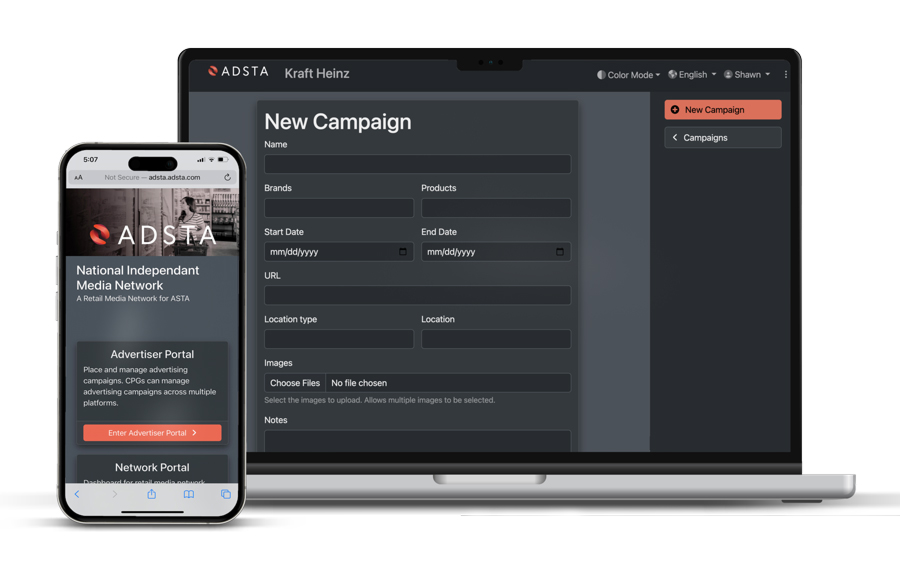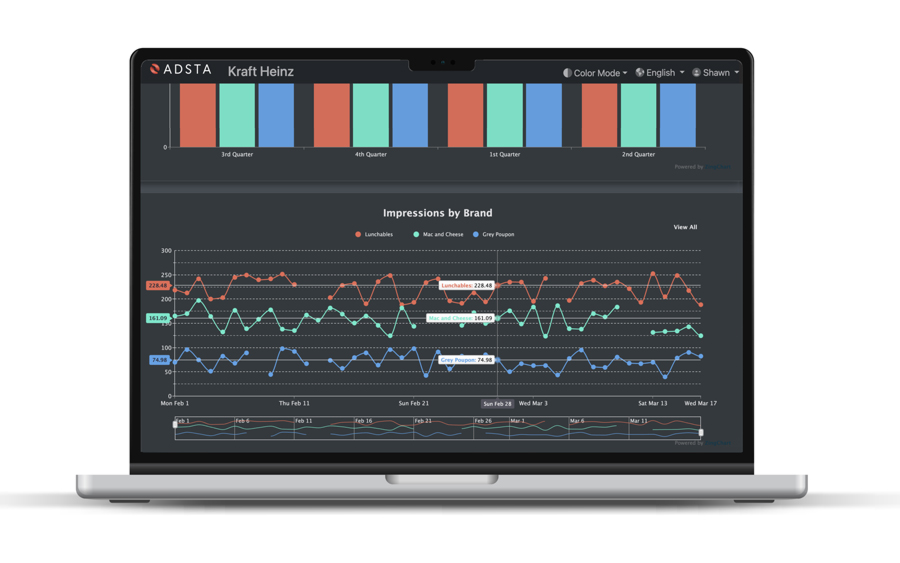How the Adsta Enablement Platform Is Changing Retail Media

A new paradigm shift in retail media
Retailers selling advertisements isn’t anything new, but with retail media networks, the process is continuing to evolve. RMNs have quickly established themselves as an invaluable way to create personalized shopping experiences, collect actionable data, and provide clear tracking from discovery to purchase. And the opportunities for both retailers and brands continue to grow.
Experts predict that by 2027, retail media advertising will increase about 60% to $160 billion, as 64% of CPGs plan to increase their retail media spending in the next year. With numbers like this, everyone is competing for their share of the pie. This means developing, overhauling, and expanding their own platforms in hopes of attracting more advertising dollars. But as the landscape continues to grow, regionals and independents are finding it difficult to compete with the established networks of national chains.
The Lay of the Land
Year-over-year ad spend in the food industry grew by more than 200% last year, compared to just 45% growth in all other categories. And as ad spending increases, so to do RMN options. Today, everyone from Kroger, Albertsons, Walmart, and Target all operate their own RMNs, with each continuing to expand their offerings as they become more established.
Just last week, Giant Eagle announced their own network, Leap Media Group, that will work to connect CPGs to an audience of over 14 million shoppers from more than 470 stores. The language on their website makes similar promises to other RMNs, offering a cohesive ecosystem where brands can expand their reach and maximize their audience. For major chains, the process of building out their own unique RMN is challenging but far from impossible. But for independent retailers with limited resources, competing in the space has felt insurmountable.
Bridging the Gap for Independents
Earlier this year, Adsta announced its latest offering: a white-labeled, user-friendly retail media platform specifically designed for independents and regional retailers to maximize their digital media monetization. The Adsta Enablement Platform (AEP) allows the over 4,000 retailers that currently make up the Adsta Retail Media Network to offer their very own branded retail media networks. Providing them access to their share of the surging retail media profits and the opportunity to compete with national chains.
The AEP platform is loaded with features that support independent and regional retailers, offering them an efficient and consolidated system to manage their own media inventories.
Whether its tracking order fulfillments, campaign analytics, or financial reporting, the AEP platform simplifies retail media campaigns all via a single platform.
Carve Your Own Path
Despite their popularity, RMNs have still been met with apprehension. A recent survey suggests that brands have concerns about RMN's effectiveness, specifically citing concerns over data sharing and transparency. As many as 21% of respondents called RMNs a “simple money grab,” and even more said that they were no more effective than other digital media channels.
The AEP platform helps cut through these concerns by offering an unprecedented level of transparency compared to other RMNs. Retailers not only gain the freedom to manage their own retail media programs, gaining valuable insights and actionable data—but they can even add CPGs with direct access as well.
As more and more RMNs are coming out of the woodwork, CPGs are forced to make crucial decisions about where to spend their advertising dollars. As major chains continue to dictate the terms and conditions, brands are looking to partner with retail media partners that allow them to reach a wide range of customers, all while giving access to valuable analytics that help shape future campaigns. The Adsta Enablement Platform allows independent and regional retailers to compete on the same scale as Tier 1 retailers while giving CPGs the opportunity to dictate the terms of their own campaigns.

